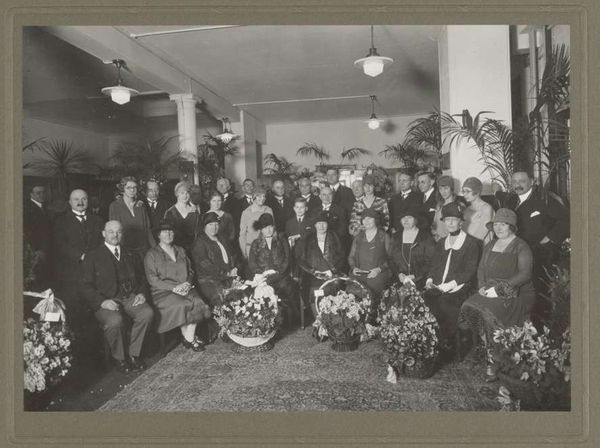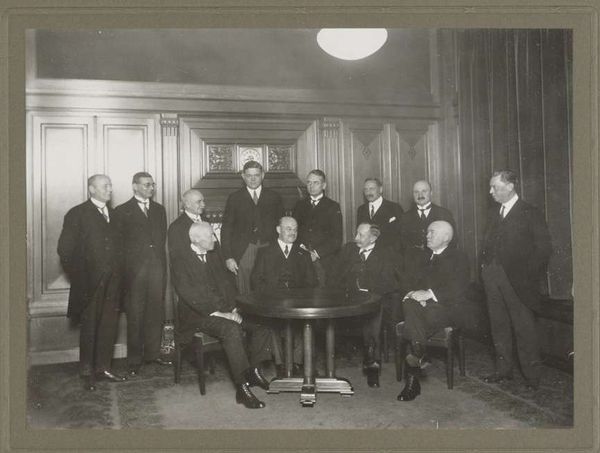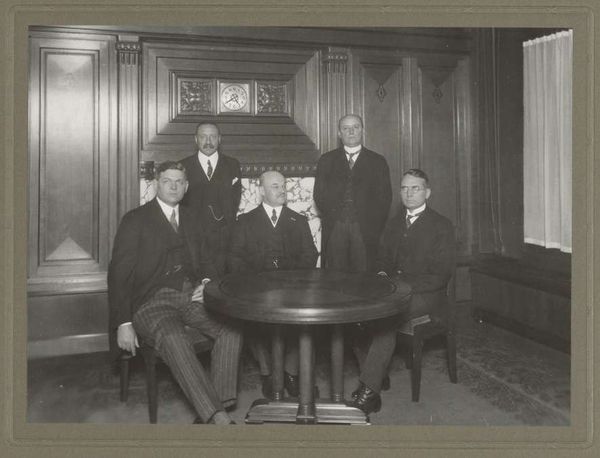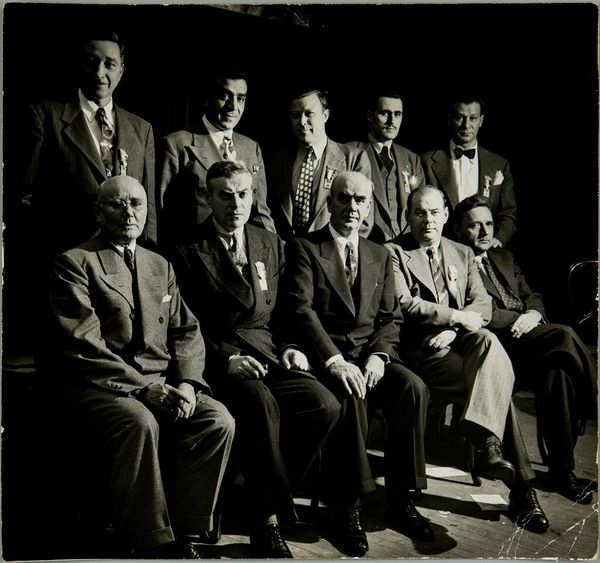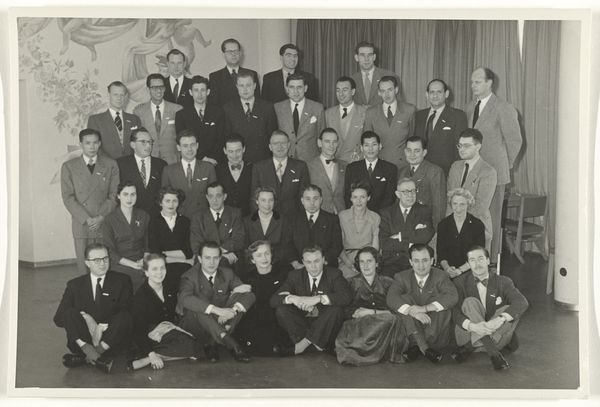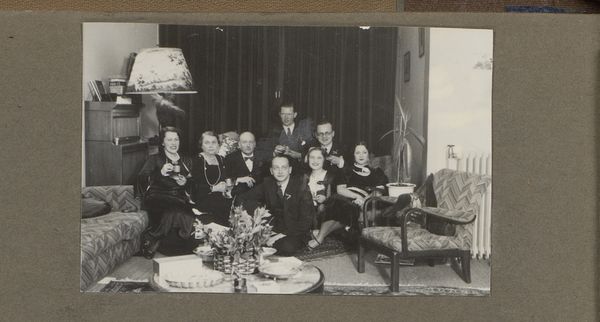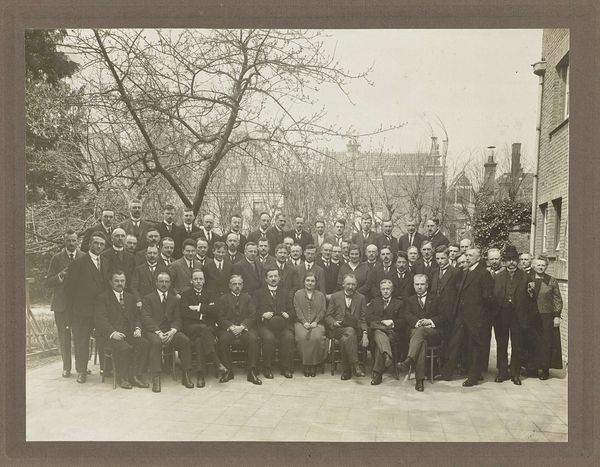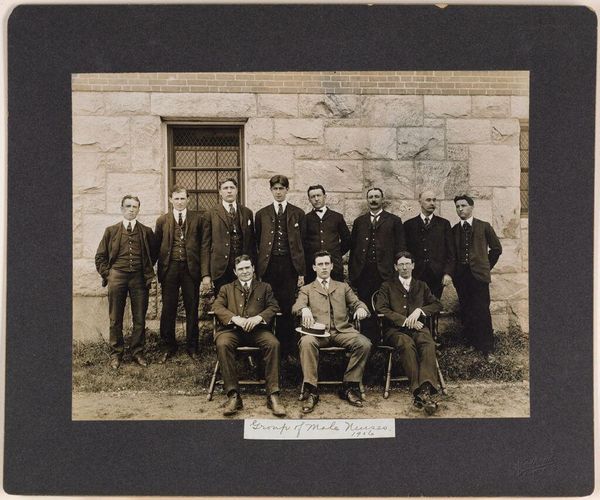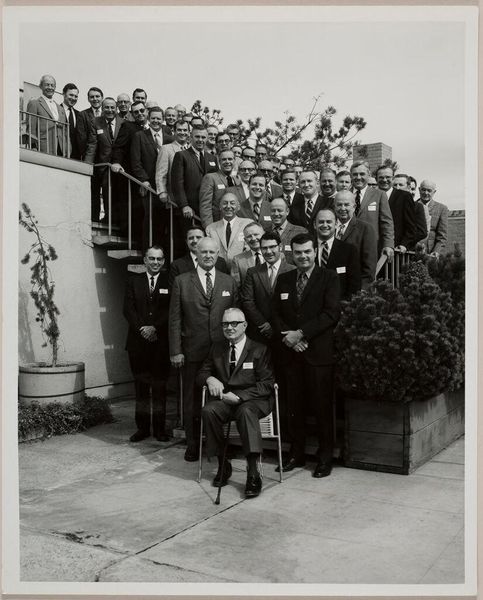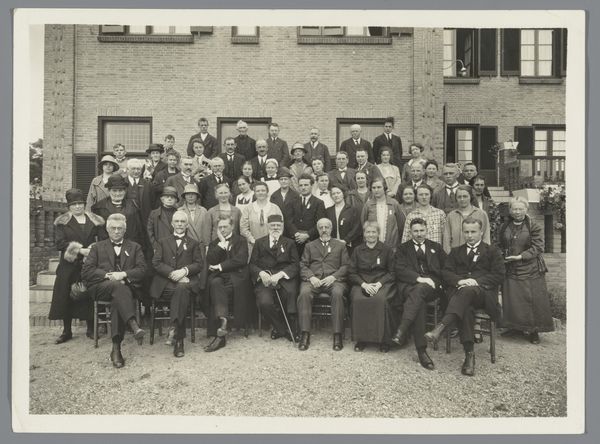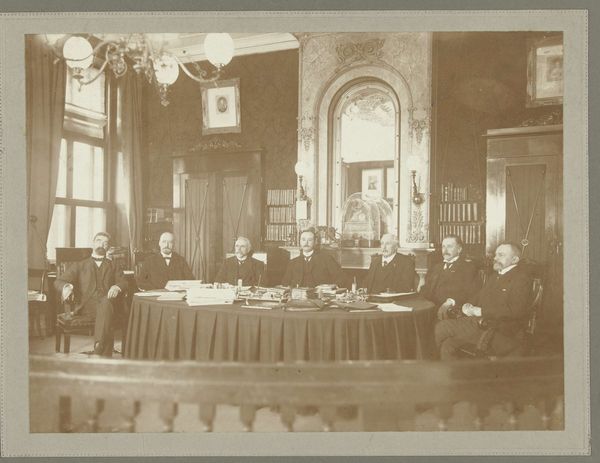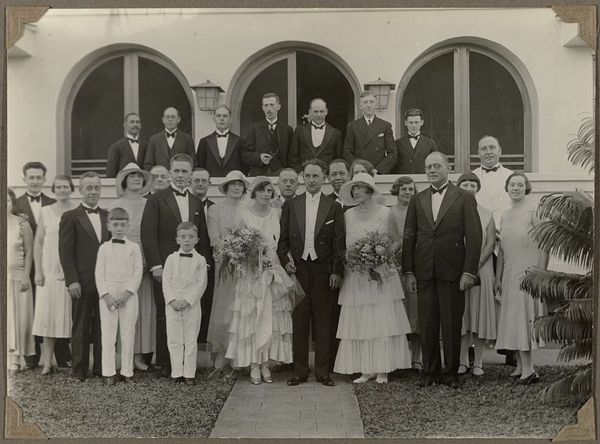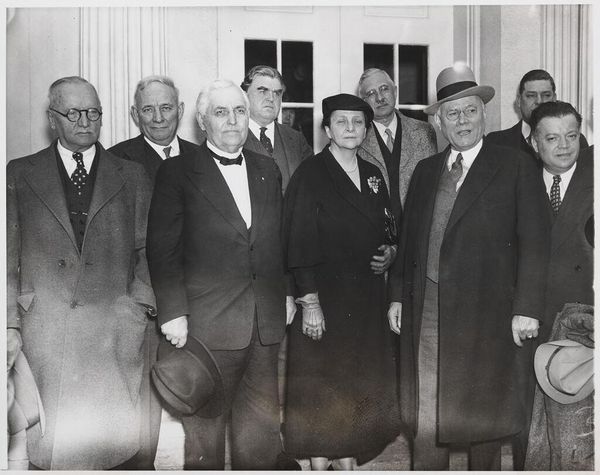
Directie van de Handelsvereniging Amsterdam (HVA) 1929
0:00
0:00
photography, gelatin-silver-print
#
portrait
#
archive photography
#
photography
#
historical photography
#
group-portraits
#
gelatin-silver-print
#
modernism
Dimensions: height 165 mm, width 230 mm
Copyright: Rijks Museum: Open Domain
Curator: Here we have a photograph from 1929 entitled "Directie van de Handelsvereniging Amsterdam (HVA)," produced by Vereenigde Foto-bureaux Amsterdam. It's a gelatin silver print, now residing here at the Rijksmuseum. Editor: It feels like a gathering of power, doesn't it? The composition is rigid, very formal, but something about the arrangement of the men and the potted plants hints at an underlying… fragility? Or perhaps performativity. Curator: The plants serve almost as heraldic devices in the visual narrative. The photograph presents itself as a symbol of stability and order during the interwar period. Editor: Right, and that's precisely the thing, isn’t it? What narratives are deliberately obscured by that ordered, posed stability? Knowing this is the board of the Amsterdam Trading Society, which was deeply implicated in colonial exploitation, especially in the Dutch East Indies… it makes you wonder about the visual language here. All of them middle-aged to elderly white men in black business suits with floral displays... Curator: Indeed. It's fascinating how this photographic technology has been adapted into formal visual conventions, especially for portraying figures of power. Their gaze, or lack thereof, adds to this aura of institutional authority. Even the arrangement of dark suits against the light wall could echo specific social or power dynamics that existed within this group. Editor: And what's outside of the photograph? That era involved systemic violence, not just resource extraction and commodification, but the destruction of environments, ecologies, and human beings. That’s the obscured context—the dark shadow that makes their clean white backdrop all the more uncanny. Curator: Perhaps by understanding the visual and social cues, we're reminded how images become a repository for societal narratives and cultural memory. In a portrait of institutional power, you can see both stability and what has been sacrificed to obtain and maintain it. Editor: Absolutely. This image provides such a striking framework, prompting questions of whose stories and perspectives are marginalized by this carefully constructed version of history. It reflects an unbalanced world that desperately needs redressing.
Comments
No comments
Be the first to comment and join the conversation on the ultimate creative platform.
